Search Results

Lashelle
In 2019, knots started to appear on my neck and jawline. My face was also massively swollen. I was unrecognizable. I had difficulty breathing, and major parts of my body were swollen as well. After several tests and two surgeries, I was unexpectedly diagnosed with non-Hodgkin T-cell lymphoma (NHL). I was told that if the cancer had stages, I was considered stage 4.
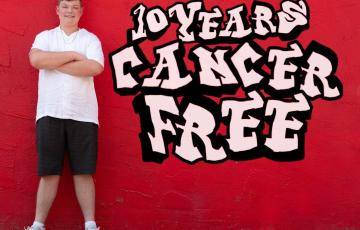
Austin
Four were spoken that day. Four crushing, breathtaking words, “Your son has cancer.” My world, my life, and my dreams for my son’s future suddenly halted while the rest of the world kept going on around us on May 14, 2011. Only days before, I was deciding what theme to have for his third birthday party and what outfit he would wear for his pictures. Days later, my husband and I were signing consents for the specific protocol of poison that would be pumped into Austin and having to digest the laundry list of possible side effects.
Chemotherapy and Drug Therapy
Beginning Treatment for CLLTreatment of CLL is started when symptoms develop that are associated with active disease. Before starting treatment, it is important to have another FISH test to see if there are any changes to the genes and/or chromosomes of the CLL cells.
Delena
I was diagnosed with acute lymphocytic leukemia (ALL) at the age of two in 1981. I was sent to Riley Hospital for Children for assessment and to create a treatment plan. At the time of my diagnosis, my mom was a single mother of two young daughters. My father passed away from Ewing sarcoma in April 1979. I was eight months old, and my sister was four when he passed.

Christine
Christine Attia knows first-hand how overwhelming and terrifying a blood cancer diagnosis can be. She lost her 27-year-old fiancé three years ago after a courageous six-month battle with acute myeloid leukemia (AML), a blood cancer which has seen few improvements in treatments in more than 40 years.

Maria
My son, AJ, was diagnosed with leukemia on September 23, 2014, and from then on, our life changed. AJ had bumps, turns, and stops during his treatment, but we were lucky to have found The Leukemia & Lymphoma Society (LLS) about a year into his 3¼-year treatment protocol. Our first event was a Light The Night (LTN) walk one year, one month, and one day from his diagnosis date. It was a special evening where AJ was able to see so many survivors and be surrounded by people who supported him.
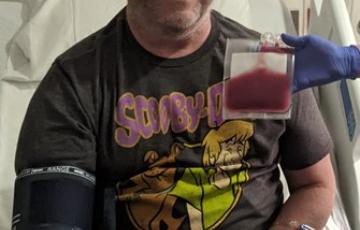
Ken
I have the unique opportunity to be both a bone marrow donor and a stem cell recipient in my journey!
In the 1980s, I registered with the C.W. Bill Young Bone Marrow Donation program while stationed at the Naval Hospital in Long Beach, CA.

Bryan (Hennessy)
My name is Bryan, but most know me by my stage name Hennessy Williams. I was diagnosed with stage 4 non-Hodgkin Burkitt lymphoma (BL) on July 1st, 2005. I was 20 years old. It was the hardest battle I ever faced, I am lucky to be here, I am lucky to be alive. I am alive because I had a tremendous amount of support from my family and friends, not everyone is blessed with this option.
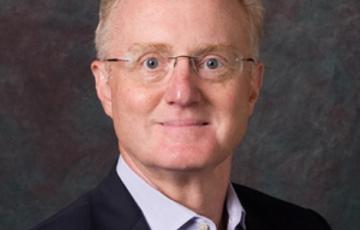
Barry
I was diagnosed with non-Hodgkin lymphoma in May of 2003. The diagnosis came after three or four months of tests attempting to diagnose a lump from my neck (which was ultimately removed). My wife and I were told that I had a disease that was considered treatable but not curable. My particular sub-type, follicular, has a tendency to reoccur. I was referred to MD Anderson Cancer Center in Houston. The staging test results showed I had a very small amount of the disease on the whole, but it was present in my bone marrow, which is considered Stage IV, or
Jonathan
This story is memory of my late fiancé, Jonathan Bentley, who passed away from acute promyelocytic leukemia (APL) at the age of 33 after a week-long battle. Jon was a truly amazing person; the type that you wish everyone could meet once in their lifetime. Although he is now gone, I wish to honor his beautiful spirit by sharing a little bit about him.

Jay
Nana’s Heroes was started to honor Lois “Nana” Bowen. When he found out she was sick, Jay, Nana’s grandson, was 13. Around ninth grade, he wanted to do something about it. Although he couldn’t fix her all up or make her all better, he could help raise money to help find a cure for the awful disease that she had.
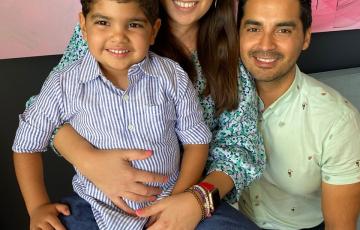
Leo
Five-year-old Leo was diagnosed with T-cell acute lymphoblastic leukemia (T-ALL) in June 2019. His parents had noticed bruising on his legs, petechiae around his eyes, fatigue, and shortness of breath, but because the symptoms didn’t present all at once, they didn’t think it was anything serious. Thankfully, on a Friday afternoon, Leo was due for a check-up where the nurse noticed the bruising on his legs and ordered a blood test.

Mary Elizabeth
When Mary Elizabeth was 10 years old, she noticed a large lump on her neck. Her parents also noticed her lack of energy, but doctor after doctor couldn’t find anything wrong.
“On a family vacation, she wasn’t looking right, and we took her back to the doctor and insisted on bloodwork. The doctors were convinced it was mono,” said Mary’s mother, Mandy.
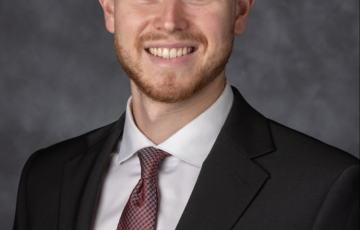
Ryan
At 22 years old, I was diagnosed with acute myeloid leukemia (AML). My first hospitalization was a month long which was followed by four more hospital stays for my chemotherapy treatments. In between each of those hospitalizations were home nursing visits, blood transfusions, doctor’s appointments, and even more hospitalizations to treat potentially life-threatening infections. I lost a total of 40 pounds throughout those months. Despite the many struggles I encountered during those months, I was able to successfully complete my treatments.
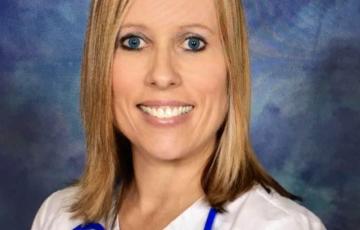
Nicole
I’m an eight-year survivor of leukemia. I was a happy, healthy young adult. I noticed my body was bruising, and I would fall asleep at work. I didn’t think anything of it, but the bruising kept coming. I have twin girls, and on their birthday, July 1, I went to the ER. They ran all kinds of tests. I felt fine actually. They came back and were talking about white blood counts and oncologists. I knew right then and there it was cancer. I had an appointment with an oncologist on July 5, my mom’s birthday, and went back to the ER. This time I was admitted. I had no idea what was going on.
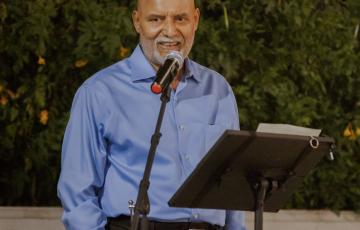
Kailash
On April 20, my 79-year-old father was diagnosed with acute myeloid leukemia (AML) after a routine blood test. A scientist, he explored all of his options thoroughly. The Leukemia & Lymphoma Society (LLS) was instrumental in providing us with accurate, up-to-date information about AML. He has chosen to prioritize his quality of life. Instead of chemo, he is spending his final chapter with friends, family, and favorite activities.
Christopher
Chris was diagnosed with T-cell acute lymphoblastic leukemia (T-ALL) in January 2022. He underwent several rounds of chemo and a bone marrow transplant (his sister was a perfect match!) to put him in remission in May 2022. During the course of his remission, we bought a house, got married, and planned a wedding until he relapsed one year to the date of his initial diagnosis.
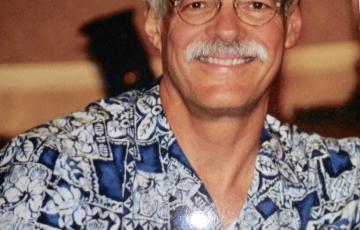
Don
My Uncle Don Parker is my hero, and my favorite uncle as well, who just never gave up on himself and others. And when he got sick and passed away with chronic lymphocytic leukemia (CLL) in 2001, I was inspired to do a Team In Training (TNT) marathon in Honolulu, Hawaii, that same year in December 2001. I was only able to do 15 miles then, but now I've done eight TNT half marathon events, and this summer it will be my 20th anniversary for doing TNT.
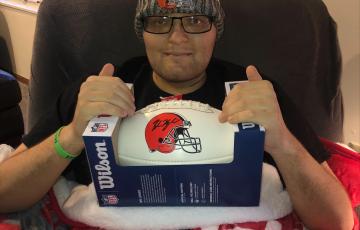
Michael
On January 3, 2020, I was diagnosed with Burkitt’s lymphoma(BL)with brain metastasis, and kidney and liver failure. During my four rounds of chemo, I had gone septic three different times, acquired nerve damage, and lost the ability to walk. After going into remission on August 6, 2020, I was tasked with relearning to walk. From April 2020 to January 2021. I was wheelchair-bound. Now as of Christmas 2021, I am walking on my own and in complete remission. The Leukemia & Lymphoma Society (LLS)gave my family so much help during my journey.
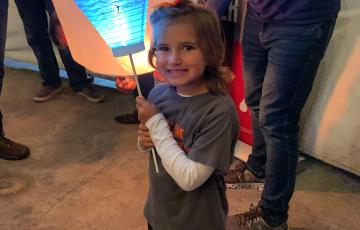
Eliza Cate
Our daughter Eliza Cate (nickname is Pickle) was diagnosed with acute lymphoblastic leukemia (ALL) at the young age of three. She's currently in remission and will celebrate five years of being cancer-free in March 2025. She has been an inspiration to so many, and now we have shifted to supporting other families here in Charleston, South Carolina, through our very own local non-profit called Pickle's People. Our three pillars are Awareness, Advocacy, and Assistance.
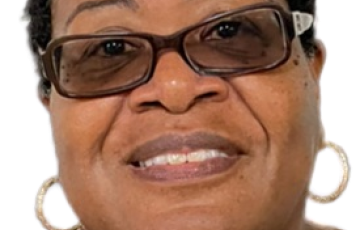
Lucille
I was diagnosed with chronic myelomonocytic leukemia (CMML) in October 2019, at the age of 57. After experiencing months of symptoms such as severe fatigue, bruising easily, and shortness of breath.
Jackson
Jackson was diagnosed on December 31, 2016 age eight with Philadelphia positive acute leukemia. Doctor's said he wouldn't live long and transferred him to Children's Health Care of Atlanta where he spent the next year hooked to machines, receiving platelets and a horrific chemotherapy regiment.
He was given the green light to come home with high restrictions and no contact instructions. He lost many friends as he lost his hair. It hasn't been easy by any means for him, his sister or myself.
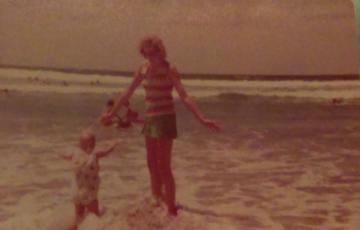
Dawnya
This is me and my bald head on vacation in California. I was diagnosed with leukemia when I was 2 1/2.
My parents made sure that my life was as normal as possible. One of my favorite comments that my parents said was Dawnya Kaye always mind your manners. They did not tell until later the story behind that saying. I was raised to be polite and say please and thank you.
My parents informed the adult me why growing up with good manners was so important to them. What happens if I survive my cancer, they did not want to have a little monster on their hands.
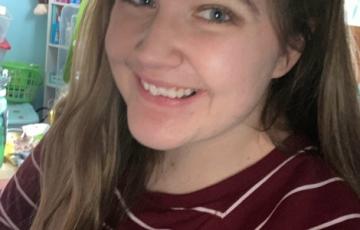
Amanda
I have been through quite a bit dealing with multiple health problems before hand going through traumatic changes not understanding why life ended up this way but sometimes God gives his hardest moments to a strongest people.
Being diagnosed with leukemia was one of the most hardest moments ever. It has been the most horrible thing ever dealing with uncertain symptoms almost dying multiple times continuously holding on for life hoping that I don’t die.
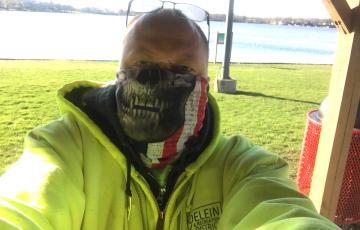
Tony
I was diagnosed in 2016 with multiple myeloma (MM) and was able to get a bone marrow transplant in 2017. After I recovered, I was cancer-free for five years. Then two years ago, my cancer came back, and I am now going through with two types of therapies to keep things at bay and doing well. Besides the ups and downs of working full-time and cancer coming back, my oncologist who saw me through retired last December, and I got a new one. However I was not happy and started seeing one of his associates and really liked her, but she is now leaving the practice in two weeks.